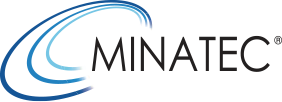News : Technological challenges
January 01 2023
Study and fabrication of microoptics integrated to an infrared focal-plane array
In recent years, the infrared imaging market has trended towards pixel size reduction. Interpixel crosstalk is a major limitation of small pitch devices, as it reduces the image resolution via the degradation of the modulation transfer function. The aim of this thesis is to study and fabricate pixel-level microoptics capable of reducing the crosstalk. The […] >>
January 01 2023
Assessment of Passive Radio Perturbations against Wireless Systems using Reconfigurable Surfaces
Reconfigurable Intelligent Surfaces (RISs), which consist of nearly-passive controllable devices (behaving as e.g., electromagnetic mirrors, lenses, or large sensing surfaces), have already shown promising potential to boost -or even sometimes just to enable- data communication and localization capabilities in next-generation wireless networks, while limiting the need of active base stations. Conversely, RISs could also be […] >>
January 01 2023
Hardware and software signal extraction for power grid resilience
Power grid is the heart of recent concerns due to climate, economic and geostrategic risks. If the safety and performance of these systems are essential subjects to study, the resilience of energy systems to cyber-attacks is an issue that cannot be ignored. Indeed, energy systems are now the target of computer attacks carried out by […] >>
January 01 2023
Near-real-time digital methods for biomarker research -EEG – fNIRS – Physio- of emotional reactivity and regulation: context of bipolar disorder.
Bipolar disorder is a chronic adult psychiatric disorder affecting between 0.5 and 1% of the population, with many unmet medical needs in terms of treatment. In this context, CEA-LETI’s Laboratory of Systems for the Person (LS2P) proposes to address the crucial challenge of monitoring patients in ambulatory or home conditions; The objective of the thesis […] >>
January 01 2023
Improvement of the contrast of photoplethysmographic measurements for the monitoring of physiological parameters
Photoplethysmography (PPG) is a non-invasive optical technique for detecting temporal variations in blood volume in tissues. PPG is used to monitor physiological parameters such as heart rate, pulse oximetry and blood pressure. PPG is a widely used method in physiological measurement systems, whether for consumer connected objects (smart watches, smartphones) or medical systems (oximeters). Even […] >>



 Contact us
Contact us How to find us
How to find us







